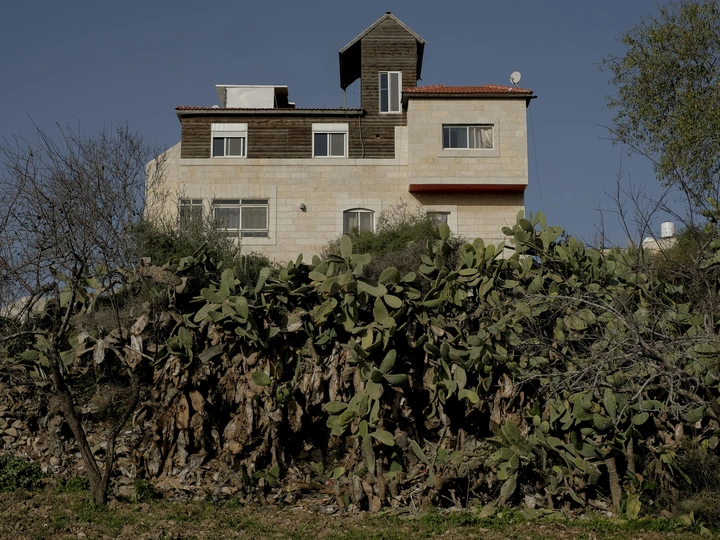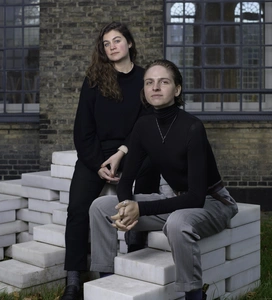Wild Hedges

Gabriella Demczuk
Ailo Ribas
Al-Wah’at is an artist research collective formed by Ailo Ribas, Gabriella Demczuk and Areej Ashhab. The collective is committed to growing communal practices in ecologies typically regarded as hostile and lifeless, and to countering anthropocentric and colonial narratives around arid lands and futures.
Graduates of the Centre for Research Architecture at Goldsmiths, University of London, Ailo, Gabriella, and Areej experiment with archival research, on-the-ground fieldwork, material experimentation and image-making through practices of care and knowledge exchange across the human and more-than-human.
In 2023, the collective embarked on their project Wild Hedges at Sakiya organisation in Ein Qiniya, Palestine, as part of the Soil Futures residency program organised by Arts Catalyst and funded by the British Council. The project, winning the COAL 2023 Prize, studies and works with the ecological and socio-political complexities of the prickly pear cactus and the cochineal insect across multiple geographies, communities and temporalities.
Ailo Ribas is a Catalan-British trans writer, researcher, community organiser and archivist. Her work seeks to build networks of knowledge-sharing and storytelling within and between communities around trans experience, plants, urban ecologies and witchcraft. Gabriella Demczuk is a Lebanese-American artist, researcher, and journalist with experience working as a member of the White House press, photographing three presidential administrations, Washington politics, and stories across the U.S. related to immigration and the environment for various news organisations. Her current work focuses on political ecology, the proprietary modes of abstraction, and colonial/capitalist land practices. Areej Ashhab is a Palestinian architect, artist and researcher whose work is rooted in community spatial practices and ecological pedagogies. She is currently an Associate Lecturer at MA City Design in the Royal College of Art in London.
Wild Hedges studies the ecological and socio-political complexities of the prickly pear cactus and the cochineal insect across multiple geographies, communities and temporalities, and collectively experiments with the material possibilities of the cactus and the cochineal to cultivate practices of care within these environments through three themes: Fibres, Pigments and Food.
Originally brought to Europe from Mesoamerica by Spanish colonisers to farm the cochineal beetle for its red dye (which failed due to the climate), the prickly pear cactus has since become an important crop, hedge plant, and cultural symbol for many countries across the Mediterranean. However, a new species of the beetle—the false carmine cochineal—has been introduced by countries such as Australia to biologically control what they see as an invasive cactus population. This has led to its spread across the Mediterranean, where large swathes of cacti are now dying. ‘Natural enemies’ are yet again being explored as a solution to control the recent infestations of false carmine cochineal.
This brings into question anthropocentric and colonial approaches towards dealing with species we regard as ‘invasive’. How can we address the notion of invasiveness differently by learning from local ecosystems how they adapt to changes in their environments? How can this knowledge inform our own practices, both on the land and in addressing climate change? Over the next three years, we aim to address these questions through research spanning the Mediterranean, Latin America, and Australia.
This comprehensive study will expand our artistic and collective practices, focusing on community workshops and material experimentation. Seeking to bring in a deeper understanding of the interconnectedness between communities and their environment, we will explore cactus fibres as a building material, cochineal as a pigment for dye-making and printing, and the use of cactus pads and fruits as food.
